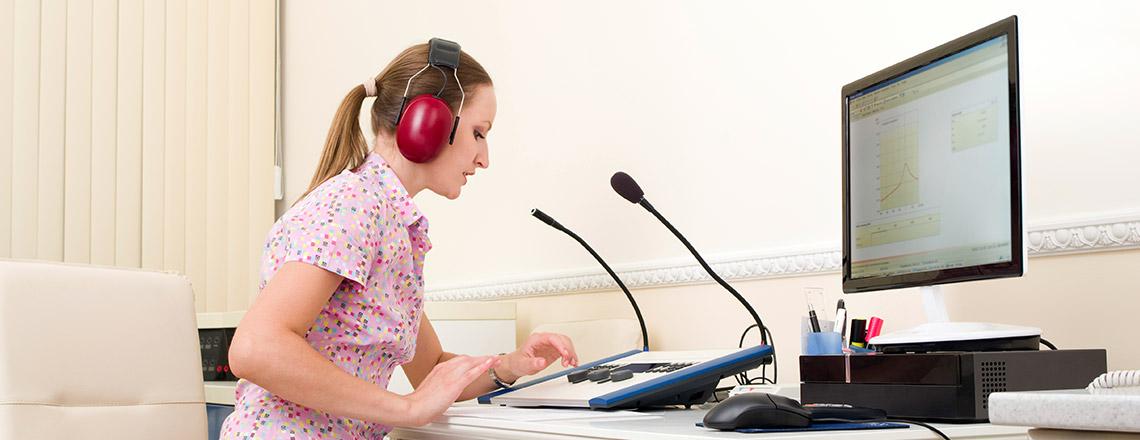You are here
Specialties

Adults:
Includes pure tone air and bone conduction testing, speech reception testing, word recognition testing, and middle ear testing (i.e., eardrum movement).
Ages 3-5 years or as needed:
Includes all of the adult testing; however, the tonal testing is accomplished using "conditioned play audiometry" in which the child drops a block in a bucket or builds a Lego tower each time he/she hears the beep.
Pediatric ages 6 months to 3 years:
Speech and tone testing are completed in a soundfield using videos, games and/or toys. Word recognition testing is not completed due to limited patient vocabulary.
Standard Audiological Evaluations (Hearing Testing)
Adult Comprehensive Audiological Evaluations (ages 5 years and up):
Immittance Testing:
Assessment for middle ear disorders that may affect hearing and general ear health.
Pure Tone Testing:
Assessment of hearing thresholds (quietest level at which you can detect a variety of sounds) under headphones or earphones.
Speech Testing:
Assessment for speech detection and speech recognition/understanding.
Pediatric Comprehensive Audiological Evaluations (ages 6 months to 4 years):
Immittance Testing:
Assessment for middle ear disorders that may affect hearing and general ear health.
Pure Tone Testing:
May be done with earphones, headphones, or in soundfield using videos, games, and/or toys. Testing is tailored to the specific child based on the child’s level of comfort and cooperation with the task and with using ear level equipment.
Speech Testing:
Tailored to the specific child based on pronunciation difficulties or vocabulary restrictions that may be present.
Electrophysiological Testing (Otoacoustic Emissions-OAE & Auditory Brainstem Response-ABR):
These tests measure the structure and function of the auditory system and require no response from the patient. These are often utilized for newborns to estimate hearing sensitivity, as they are too young to participate in behavioral testing. These tests, specifically the ABR, may also be utilized in a neurological capacity to determine the neurological synchrony of the auditory system.
Electrocochleography (ECOG):
Measurement of cochlear (inner ear) electrical potentials. This test is used to determine the presence of inner ear disorders like Meniere’s Disease and Superior Semi-Circular Canal Dehiscence.
Otoacoustic Emissions (OAE):
Measurement of cochlear (inner ear) hair cell function. This test may be used with pediatric and adult populations to ensure that the cochlea’s anatomy and physiology is normal. This test is often used for ototoxicity monitoring for patients using certain medications (i.e., IV antibiotics, chemotherapy).
Videonystagmography (VNG) testing:
Test for the dizzy patient. The vestibular portion of the inner ear is assessed through various measures to locate any dysfunction and sources of a patient's dizziness, vertigo, or balance difficulties. Prior to having a VNG, a specific set of pre-test instructions must be closely reviewed and followed.
Featured Providers
Brenna Carrigan-McClinsey Au.D, CCC-A, F-AAA
SPECIALITIES: Audiology
Board Certified: Audiology
Locations
Offices
Middletown, New York 10941
P: 845.703.6999
Hours
Rock Hill, New York 12775
P: 845.794.6999
Hours
